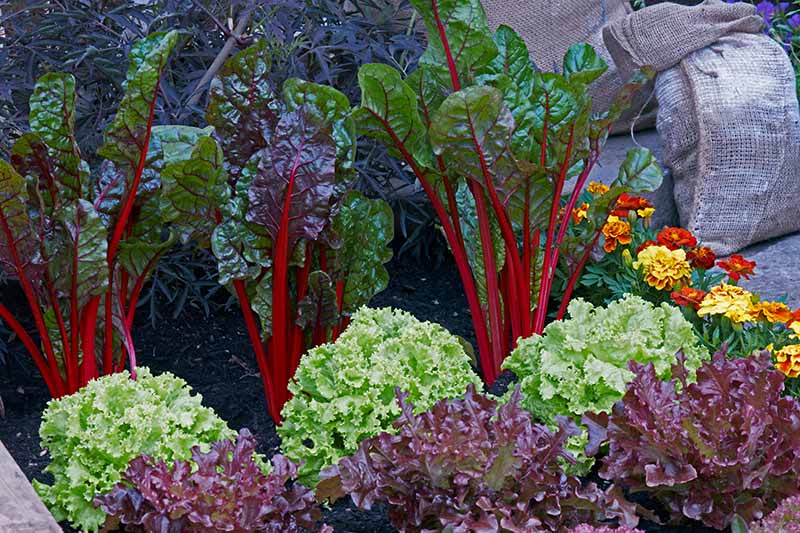So, you’ve decided to try your hand at growing some Swiss chard in your garden. Good choice! This leafy green vegetable not only adds vibrant color to your garden but is also incredibly nutritious. However, did you know that not all plants get along well with Swiss chard? In this article, we will explore some companion plants that you should avoid planting near your Swiss chard to ensure a successful and thriving garden. Let’s dive into the world of gardening and find out which plants to keep at a safe distance from your beloved Swiss chard.
Companion Plants to Avoid for Swiss Chard
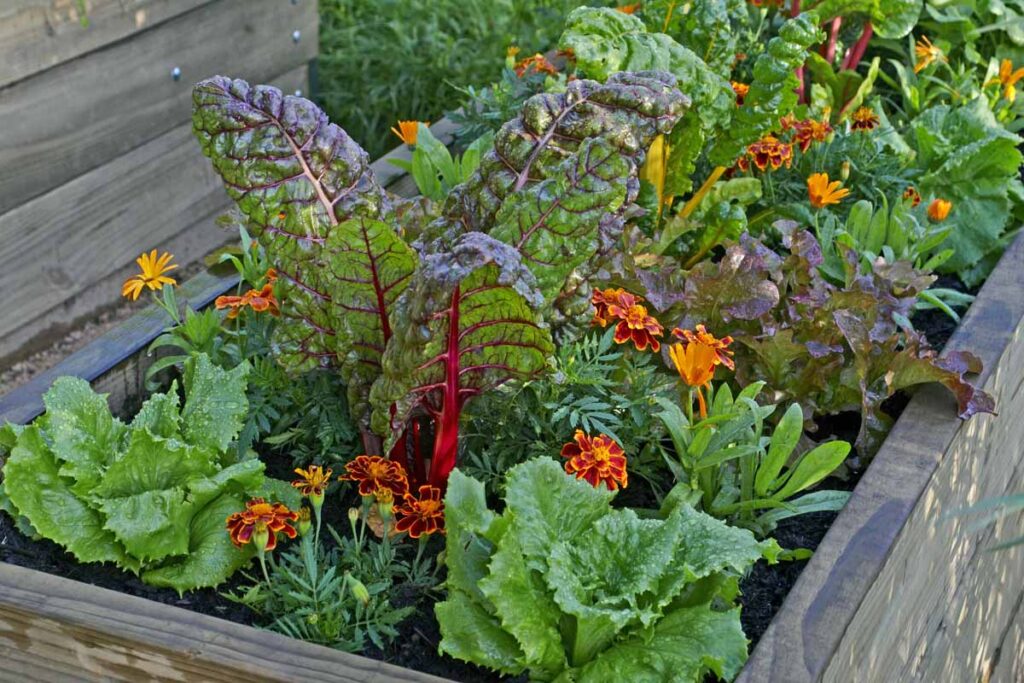
Overview of Companion Planting
When it comes to gardening, it’s important to consider not only which plants thrive well together but also which ones should be kept apart. This practice is known as companion planting and can greatly impact the health and productivity of your garden. By selecting suitable companion plants for your Swiss chard, you can create a harmonious garden ecosystem. On the flip side, choosing the wrong companions can lead to stunted growth, pest infestations, and even disease. In this article, we’ll discuss the plants that should be avoided when planting Swiss chard and explain the negative effects they can have.
Negative Effects of Wrong Companion Plants
The wrong companion plants in your Swiss chard bed can cause a range of negative effects. Some plants compete with Swiss chard for nutrients, sunlight, and water, leading to decreased growth and productivity. Others attract pests that can harm not only the companion plant but also your Swiss chard. Additionally, certain plants secrete chemicals that inhibit the growth of neighboring plants, making it important to select companions wisely. By being mindful of which plants to avoid, you can ensure a thriving Swiss chard crop.
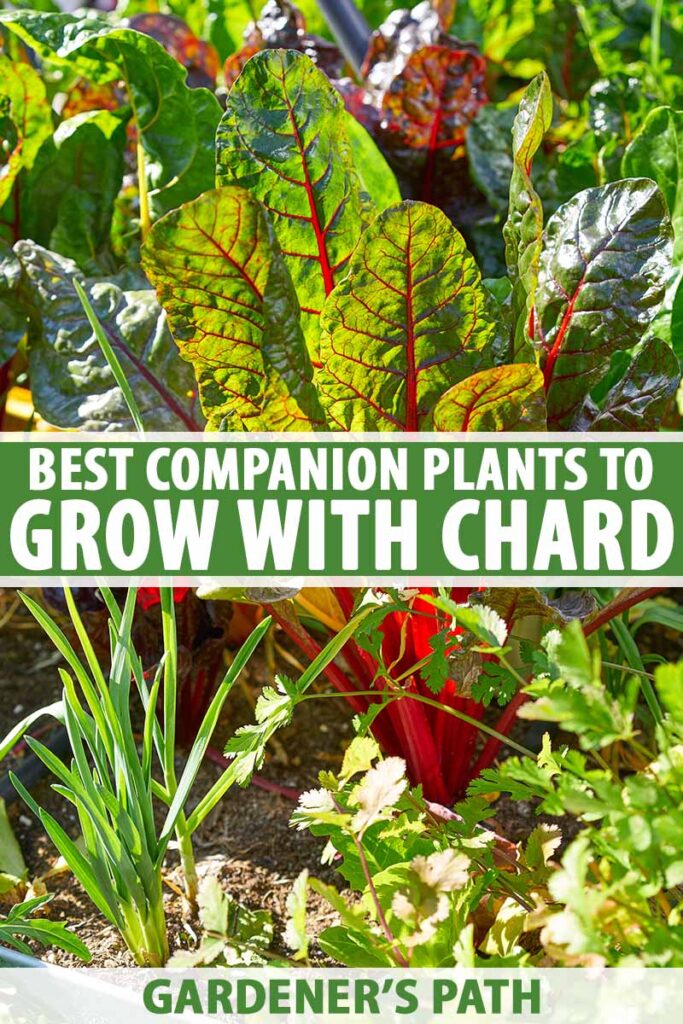
Brassicas
Cabbage
While cabbage and Swiss chard might seem like they would be compatible due to their similar growth habits, they are actually not the best companion plants. Both plants are heavy feeders, meaning they require a lot of nutrients from the soil. When planted together, they compete for these nutrients, leading to reduced growth for both plants. It’s best to keep your Swiss chard and cabbage in separate beds to maximize their individual growth potential.
Broccoli
Similar to cabbage, broccoli is another member of the brassica family that does not make a great companion for Swiss chard. Broccoli also requires a lot of nutrients and space to grow. If planted too close to Swiss chard, it can overshadow and shade the smaller plants, stunting their growth. To ensure the health and productivity of your Swiss chard, it’s best to keep it away from broccoli.
Cauliflower
Cauliflower, another member of the brassica family, shares similar characteristics with cabbage and broccoli that make it an incompatible companion for Swiss chard. The large leaves of cauliflower can shade the Swiss chard, inhibiting its growth. Additionally, both plants have similar nutrient requirements, leading to competition for these resources. To avoid stunted growth and maximize the potential of your Swiss chard, it’s best to avoid planting it alongside cauliflower.
Nightshades
Tomatoes
While tomatoes are a popular garden staple, they can have negative effects on Swiss chard when planted together. Tomatoes and Swiss chard have different nutrient requirements, with Swiss chard preferring nitrogen-rich soil while tomatoes require more phosphorus and potassium. This difference in nutrient needs can result in nutrient imbalances and reduced growth for both plants. Additionally, some tomato varieties produce chemicals that can inhibit the growth of neighboring plants, including Swiss chard. For optimal growth, it’s recommended to keep these two plants separate.
Peppers
Peppers, like tomatoes, are part of the nightshade family and should be avoided as companion plants for Swiss chard. Similar to tomatoes, peppers have different nutrient requirements, which can lead to imbalances when planted together with Swiss chard. Additionally, peppers are susceptible to similar pests and diseases as Swiss chard, meaning a pest infestation on one plant can easily spread to the other. To maintain the health of your Swiss chard crop, it’s best to keep it away from peppers.
Potatoes
Potatoes, another member of the nightshade family, are also not an ideal companion plant for Swiss chard. Potatoes and Swiss chard have competing nutrient needs, with Swiss chard requiring more nitrogen while potatoes prefer a higher phosphorus and potassium ratio. Planting them together can result in nutrient imbalances and decreased growth for both plants. Moreover, potatoes are prone to specific diseases and pests that can also affect Swiss chard. To avoid these issues, it’s recommended to separate these two crops.
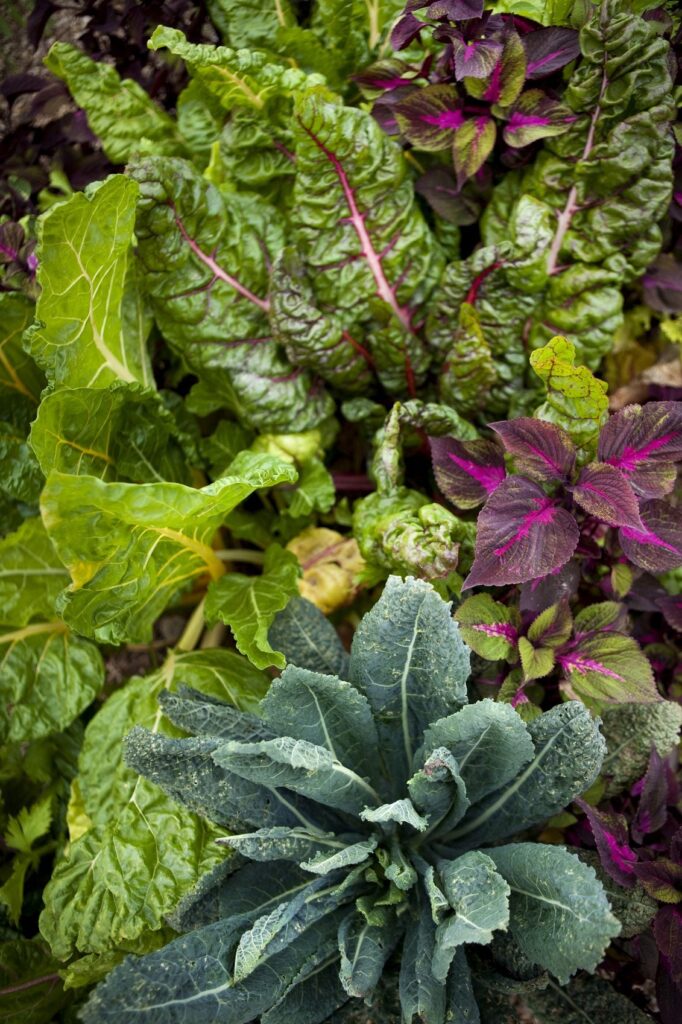
Alliums
Onions
Though onions are a versatile and popular vegetable, they are not the best companion for Swiss chard. Onions belong to the allium family, which includes garlic, shallots, and leeks, among others. This family of plants produces sulfur compounds that can inhibit the growth of Swiss chard. Furthermore, Swiss chard is a leafy green, and planting it near onions can attract onion flies, which can damage both crops. To ensure optimal growth for your Swiss chard, avoid planting it alongside onions.
Garlic
Similar to onions, garlic is not an ideal companion for Swiss chard. Garlic also contains sulfur compounds that can hinder the growth of neighboring plants, including Swiss chard. Additionally, the strong aroma of garlic can attract pests that may damage both crops. To promote healthy growth and avoid potential pest problems, it’s best to keep Swiss chard separate from garlic.
Legumes
Beans
Beans, including both bush beans and pole beans, can have detrimental effects on Swiss chard. Beans are known for fixing nitrogen in the soil, which can be beneficial for some plants. However, Swiss chard does not require as much nitrogen as beans. Planting these two together can lead to an excess of nitrogen, causing imbalances in nutrient levels. Furthermore, beans can overshadow the smaller Swiss chard plants, reducing their access to sunlight. To ensure optimal growth for your Swiss chard, it’s best to avoid planting it with beans.
Peas
Peas, like beans, fix nitrogen in the soil and have similar nutrient requirements. While this can be beneficial for some plants, it can cause imbalances for Swiss chard. Additionally, peas are climbers and can overshadow and compete with Swiss chard for sunlight and space. Separating these two crops will enable Swiss chard to thrive without any nutrient or space limitations imposed by the peas.
Lentils
Lentils, another legume crop, should be avoided as a companion for Swiss chard. Like beans and peas, lentils fix nitrogen in the soil, which can lead to nutrient imbalances. Additionally, lentils have similar growth habits to peas, meaning they can overshadow and compete with Swiss chard for resources. To ensure optimal growth and productivity for your Swiss chard, it’s recommended to keep it separate from lentils.
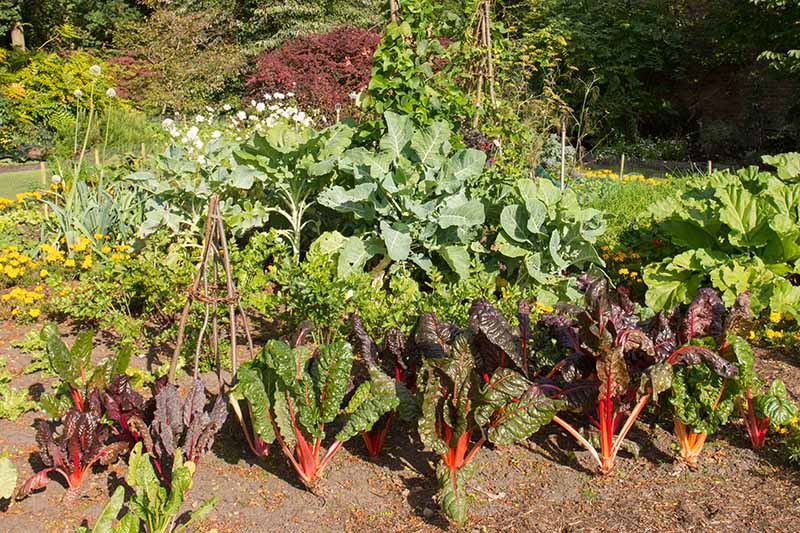
Herbs
Dill
While dill is a flavorful herb often used in cooking, it is not an ideal companion for Swiss chard. Dill produces chemicals that can inhibit the growth of nearby plants, including Swiss chard. Additionally, dill can attract pests that may harm your Swiss chard crop. To foster healthy growth for your Swiss chard, it’s best to avoid planting it near dill.
Sage
Sage, another herb known for its aromatic properties, can have negative effects on Swiss chard when planted together. Sage contains oils that can inhibit the growth of neighboring plants, including Swiss chard. Furthermore, pests that are attracted to sage can also harm your Swiss chard. To ensure optimal growth and avoid potential pest problems, it’s recommended to keep Swiss chard separate from sage.
Rosemary
While rosemary is a popular herb known for its fragrance and culinary uses, it is not a suitable companion plant for Swiss chard. Rosemary produces chemicals that can hinder the growth of nearby plants, including Swiss chard. Additionally, pests that are attracted to rosemary may also damage your Swiss chard crop. To promote the health and productivity of your Swiss chard, it’s best to avoid planting it near rosemary.
Leafy Greens
Spinach
Spinach, despite being a leafy green like Swiss chard, is not the best companion plant. Spinach is a heavy feeder, meaning it requires a lot of nutrients from the soil. When planted near Swiss chard, it can lead to nutrient competition and reduced growth for both plants. To ensure optimal growth and nutrient availability for your Swiss chard, it’s recommended to keep it separate from spinach.
Lettuce
Similarly to spinach, lettuce is not an ideal companion for Swiss chard. Lettuce also has high nutrient requirements and can compete with Swiss chard for these resources. Additionally, lettuce can quickly overshadow the smaller Swiss chard plants, limiting their access to sunlight. To maximize the growth potential of your Swiss chard, it’s best to avoid planting it alongside lettuce.
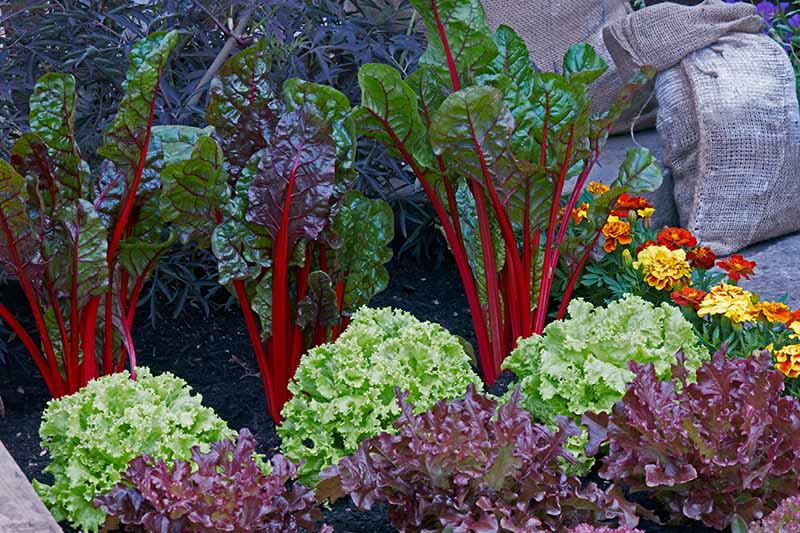
Conclusion
Choosing the right companion plants for your Swiss chard is crucial for maximizing its growth and productivity. Avoiding certain plants, such as brassicas, nightshades, alliums, legumes, herbs, and other leafy greens, can help prevent nutrient imbalances, reduced growth, and potential pest infestations. By being mindful of these companion planting considerations, you can ensure a flourishing Swiss chard crop and a bountiful garden.
